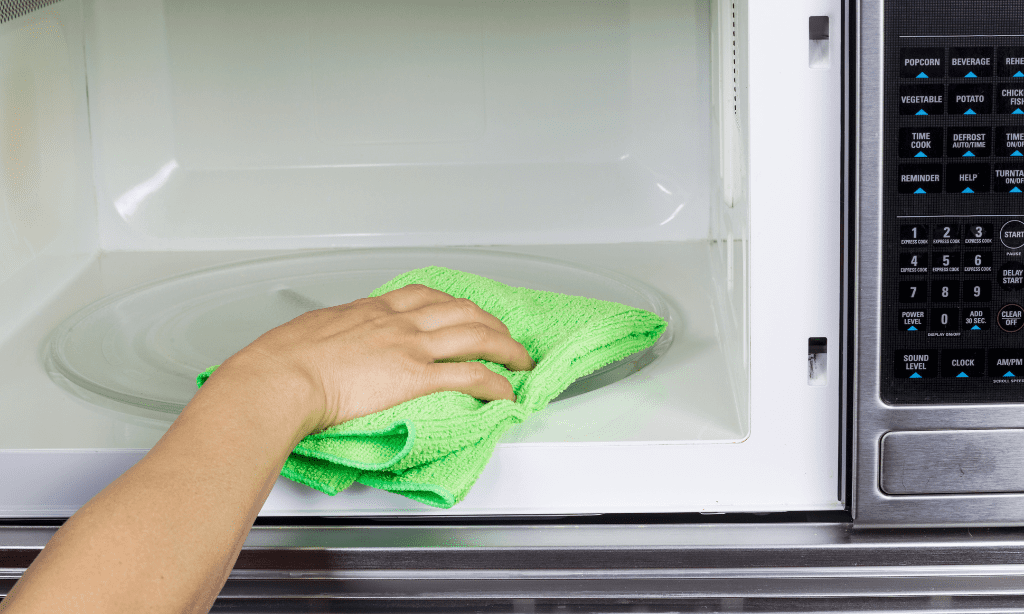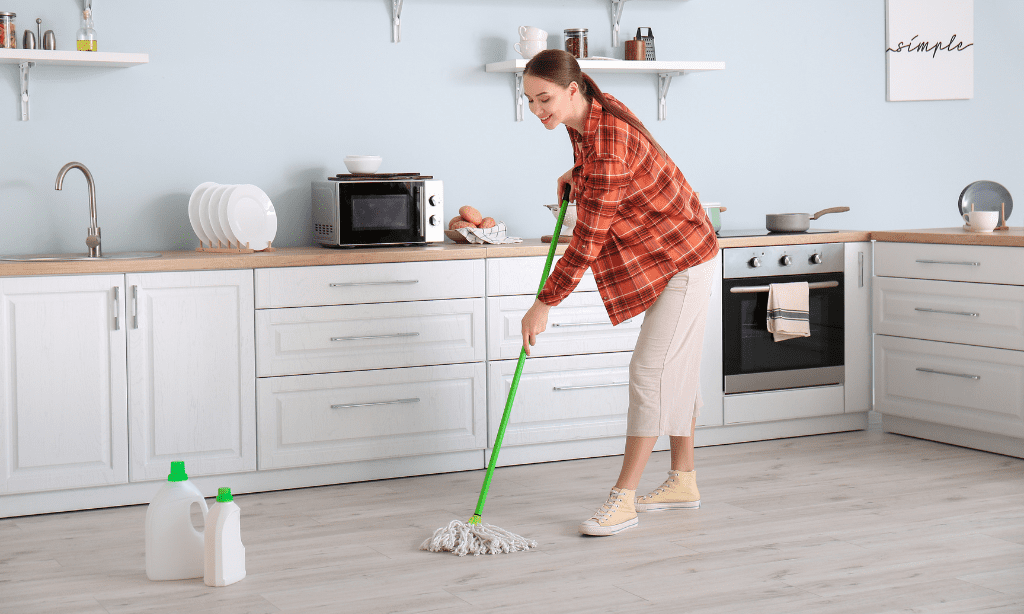
1. Declutter Before You Start
Clear countertops, remove expired pantry items, and organize cabinets. Less clutter makes deep cleaning more effective and prevents dust and grime buildup.
- Throw away expired food, old spices, and unused kitchen gadgets.
- Wipe down shelves before putting items back.
- Store frequently used items within easy reach.
2. Clean Your Refrigerator Inside and Out
Your fridge collects spills, bacteria, and odors over time.
- Remove all food and throw out anything expired.
- Wipe shelves with a mix of baking soda and water.
- Clean drawers and compartments separately.
- Vacuum the fridge coils to improve energy efficiency.
3. Degrease the Stove and Oven
Food splatters and grease can make your stove and oven one of the dirtiest kitchen areas.
- Use baking soda and vinegar to break down grease.
- Remove and soak burner grates and knobs in warm soapy water.
- Wipe down oven racks and run the self-cleaning cycle if available.
4. Sanitize the Microwave
Leftover food splatters in the microwave can lead to unpleasant odors and bacteria buildup.
- Place a bowl of water and lemon slices inside and microwave for 3 minutes.
- Let the steam loosen dirt before wiping with a microfiber cloth.

5. Scrub Countertops and Backsplash
Different countertop materials require specific care:
- Granite & Quartz: Use mild soap and water (avoid acidic cleaners).
- Laminate: Wipe with vinegar and water for a streak-free finish.
- Tile: Scrub grout with a baking soda paste and a toothbrush.
6. Deep Clean Kitchen Cabinets and Handles
Cabinet surfaces collect dust, fingerprints, and grease.
- Use warm water and dish soap to wipe down doors and handles.
- For tough grease stains, mix baking soda and vinegar.
- Organize inside cabinets by grouping similar items together.
7. Wash and Sanitize the Sink
Your kitchen sink harbors more bacteria than your toilet seat.
- Sprinkle baking soda in the sink and scrub with a sponge.
- Pour vinegar down the drain to kill bacteria and remove odors.
- Clean the garbage disposal by running ice cubes and lemon peels through it.
8. Refresh Your Dishwasher
Even dishwashers need cleaning to remove grease and soap buildup.
- Remove filter and racks and clean separately.
- Run an empty cycle with white vinegar to eliminate odors.
- Sprinkle baking soda inside and run another short cycle.
9. Mop and Disinfect Floors
Kitchen floors collect crumbs, grease, and spills daily.
- Vacuum or sweep thoroughly before mopping.
- Use a disinfectant cleaner or a vinegar-water solution.
- Pay extra attention to corners and under appliances.

10. Don’t Forget Light Fixtures and Vent Hoods
Dust and grease accumulate on kitchen light fixtures and exhaust fans.
- Wipe light fixtures with a damp cloth.
- Clean range hoods with degreaser spray.
FAQs About Kitchen Deep Cleaning
1. How often should I deep clean my kitchen?
A deep clean every 1-3 months prevents bacteria buildup and keeps your kitchen fresh.
2. What’s the best way to prevent grease buildup?
Wipe down stove surfaces after every use and use a range hood while cooking.
3. How do I remove stubborn stains from countertops?
A baking soda paste (baking soda + water) helps lift tough stains without scratching surfaces.
4. What’s the easiest way to clean the garbage disposal?
Drop lemon slices, ice cubes, and baking soda into the disposal and run it with cold water.
5. Is vinegar safe for all kitchen surfaces?
No, avoid using vinegar on granite and marble as it can damage the surface.
Let Bello’s Cleaning Handle the Hard Work!
A deep-cleaned kitchen makes cooking safer and more enjoyable. If you need professional kitchen cleaning services in Anne Arundel County, MD, Bello’s Cleaning is here to help!
📞 Call or text: 443.837.4034
📧 Email: info@belloscleaning.com
Know someone who could use these kitchen cleaning tips? Share this article with them!

